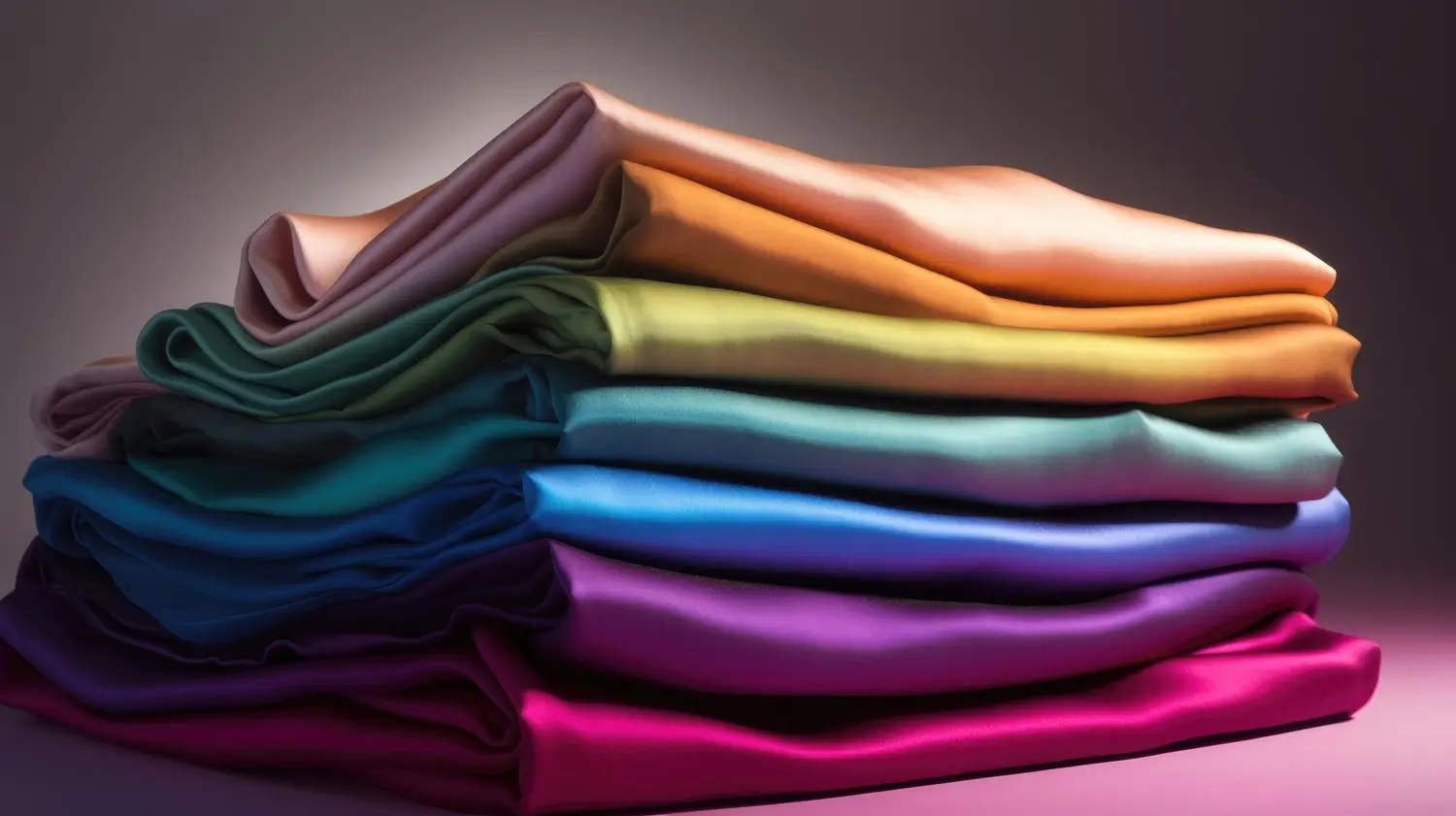Polyester fabric is a versatile synthetic textile that has gained widespread popularity due to its numerous beneficial characteristics and diverse applications. Let’s delve deeper into its versatility and explore how it is used in various industries.
WHAT IS POLYESTER FABRIC?

Polyester fabric is a synthetic textile made from petroleum-based products. It is known for its durability, wrinkle resistance, and easy care. Polyester is made from polyethylene terephthalate (PET) polymers, which are spun into fine threads and woven or knitted to create the fabric. It is widely used in apparel, home furnishings, industrial applications, and technical textiles.
Polyester’s versatility, quick-drying properties, and color retention make it suitable for a range of uses. While it has benefits such as affordability and resistance to stretching, it is less breathable than natural fibers. Efforts are being made to develop sustainable versions of polyester, promoting a more eco-friendly textile industry.
HOW IS POLYESTER FABRIC MADE?
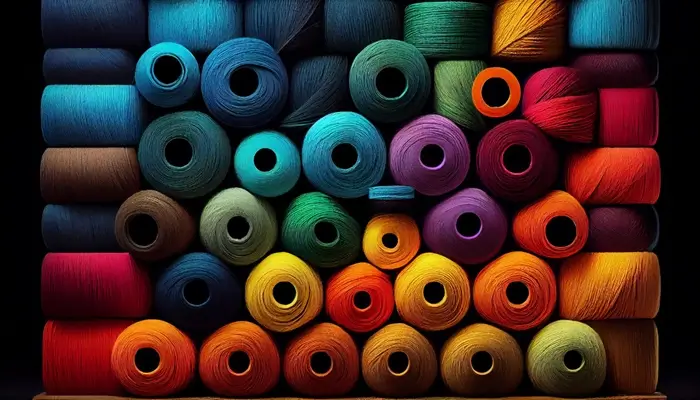
Polyester, unlike cotton, is a synthetic fiber that is not derived from a plant. Instead, polyester is created chemically from derived substances. There are five fundamental phases in the creation of polyester, albeit they differ based on the producer creating polyester, and the various varieties of polyester:
Make a monomer: Petroleum is converted into components that can be utilized for a variety of uses after being excavated from the soil and delivered to a refinery. The two monomers required to make polyester are ethylene and p-xylene, which are taken from petroleum.
Create a polymer: The monomers are combined with dimethyl terephthalate producing the polymer polyethylene terephthalate (PET). PET is the plastic used to make soda and water bottles. It has a consistency similar to honey.
Extrude the polymer: After PET has been created, it is extruded to allow for drying and hardening. It is then divided into tiny pellets.
Melt and spin the pellets: The PET pellets are once more melted, and the molten PET is extruded through spinnerets, which are small holes, to create thread. These lengthy threads become polyester fibers after cooling. The spinneret forms can be changed to produce different fiber grades depending on what the fibers are used for.
A yarn is born: The fibers are twisted into polyester yarn and made ready to be knit into fabric, giving birth to polyester yarns. To accomplish certain outcomes, the fibers can now be chopped or subjected to additional chemical alterations.
There are several ways to change this production process, depending on the desired result. For instance, the fibers will be modified to make a thin filament in order to manufacture soft and smooth fabrics. The ethylene utilized in the procedure can also be changed in other ways. In the production of plant-based polyesters, sugarcane is commonly utilized as a substitute for petroleum as the source of ethylene. This innovative approach capitalizes on the abundance of renewable sugarcane resources, which undergo a series of sophisticated processes, such as fermentation and polymerization, to yield the desired biopolymer.
HOW DOES POLYESTER FABRIC FEEL?
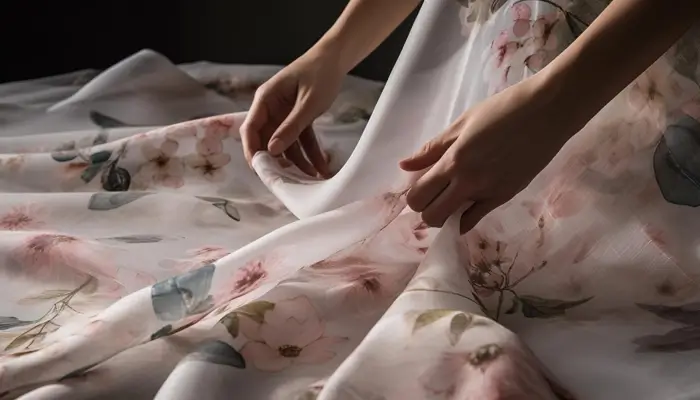
The feel of polyester fabric can vary depending on its specific composition and the finishing processes it undergoes. Generally, polyester fabric is known for having a smooth and silky texture. However, it may not have the same luxurious or soft feel as natural fibers like cotton or silk.
Pure polyester fabric can sometimes feel slightly synthetic or artificial to the touch. It tends to have a smooth and slick surface, which can give it a slight sheen. Some people may find it less breathable compared to natural fibers, as polyester does not have the same level of moisture absorption and airflow.
However, advancements in textile technology have allowed for the development of polyester fabrics with improved softness and texture. Fabrics and synthetic materials that blend polyester with other fibers, such as cotton or viscose, can offer a softer and more comfortable feel. Additionally, special finishing treatments like brushing or sanding can enhance the softness and texture of polyester fabrics.
THE POWER OF POLYESTER
The polyester fabric possesses remarkable power due to its versatile nature and advantageous properties. It is a strong and durable textile that resists stretching, shrinking, and wrinkling, ensuring longevity and reliability.
Additionally, polyester excels in moisture-wicking, drawing moisture away from the body and drying quickly, making it ideal for athletic and outdoor apparel. The fabric is easy to care for, requiring minimal ironing and being machine washable. Its colorfastness is exceptional, as polyester retains vibrant hues even after repeated washing and exposure to sunlight. Polyester fabric’s versatility is evident as it can be blended with other fibers to enhance its qualities and mimic the appearance of natural fabrics.
Furthermore, polyester is affordable, making it accessible to a wide range of consumers without compromising quality. Sustainable versions of polyester, such as recycled polyester and bio-based polyester, are being developed to reduce its environmental impact. Overall, the power of polyester lies in its ability to meet diverse needs across industries, offering strength, comfort, and convenience.
HOW IS POLYESTER FABRIC USED?

Polyester fabric is utilized in various industries and applications due to its versatility and advantageous properties. It is commonly used in apparel, including shirts, dresses, and sportswear, thanks to its durability, wrinkle resistance, and colorfastness. Polyester fabric is also found in home furnishings such as curtains, upholstery, bedding, and cushions, offering durability and resistance to fading.
In addition, it is employed in technical textiles for automotive interiors, industrial filters, medical textiles, and more, due to its strength and resistance to chemicals. Polyester fabric finds applications in outdoor gear, packaging materials, flags, banners, and industrial uses such as conveyor belts and insulation. Its versatility allows it to cater to diverse needs in various industries.
WHERE IS POLYESTER FABRIC PRODUCED?
Polyester fabric is produced in many countries around the world. The production of polyester fabric involves multiple stages, including polymerization, spinning, weaving or knitting, and finishing.
Some of the major producers of polyester fabric include China, India, the United States, Turkey, and Germany. China, in particular, has a significant presence in the global polyester fabric market, being one of the largest producers and exporters of polyester textiles.
However, polyester fabric production is not limited to these countries alone. Many other countries, including Bangladesh, Vietnam, Pakistan, South Korea, and Brazil, also have a substantial textile industry that includes polyester fabric manufacturing.
The choice of polyester production location can depend on several factors such as access to raw materials, manufacturing capabilities, cost-effectiveness, and market demand. Polyester fabric production is a global industry, with different countries playing significant roles in meeting the worldwide demand for polyester textiles.
WHAT ARE THE DIFFERENT TYPES OF POLYESTER FABRICS?
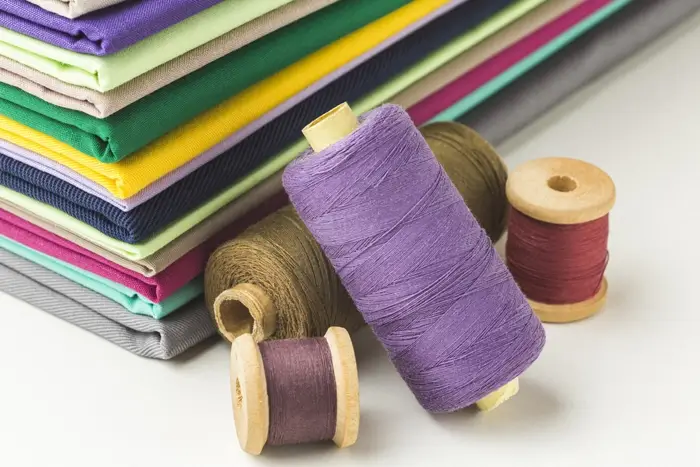
1. Polyethylene Terephthalate Polyester
Polyethylene polyester fabric, also known as PE polyester fabric or simply polyethylene fabric, is a specialized type of fabric that combines the properties of polyethylene and polyester. It is a hybrid fabric that incorporates both materials to create a unique textile.
Polyethylene polyester fabric is often chosen for its excellent durability, abrasion resistance, and weather resistance. It can withstand harsh conditions, making it suitable for outdoor and industrial use. The combination of these materials can result in a fabric that is strong, lightweight, and resistant to tearing or stretching.
Filament
Polyester fabric filament refers to the continuous strands of polyester fiber used in the production of fabrics. It is typically produced through a process called extrusion, where the molten polyester polymer is forced through fine holes to form long filaments. These filaments are then spun into yarns and woven or knitted into fabrics.
Staple
Polyester fabric staples refer to short, staple fibers made from polyester. These fibers are typically cut to a specific length and used in the production of non-woven fabrics, such as felt or batting. Polyester fabric staples offer durability, resilience, and easy blending with other fibers, making them valuable in various applications.
Tow
Polyester fabric tow refers to a bundle of continuous polyester filament fibers that are parallel and lightly bonded together. It is a form of raw material used in the production of various polyester-based products. Polyester fabric tow is versatile, durable, and can be processed into yarns, threads, or non-woven fabrics for different applications.
Fiberfill
Polyester fabric fiberfill is a type of synthetic filling material commonly used in pillows, cushions, comforters, and stuffed toys. It is made from fine polyester fibers that are lightweight, fluffy, and offer excellent loft and insulation properties. Polyester fiberfill provides softness, resilience, and hypoallergenic benefits to enhance comfort and coziness in various applications.
2. Plant-Based Polyester
Plant-based polyester, also known as bio-based polyester or bio-polyester, is a type of polyester fabric that is derived from renewable plant sources. Unlike traditional polyester, which is derived from non-renewable fossil fuels, plant-based polyester is typically produced using plant-based polymers such as polylactic acid (PLA) or bio-based ethylene glycol. The production of plant-based polyester involves converting plant sugars into monomers that are then polymerized to create polyester for the fabric. This alternative polyester offers several environmental benefits, including a reduced carbon footprint and decreased reliance on non-renewable resources.
Additionally, plant-based polyester retains the desirable qualities of traditional polyester, such as durability, strength, and resistance to wrinkles and fading. Its use promotes sustainability and supports the development of more eco-friendly textile options.
3. PCDT Polyester
PCDT polyester, short for poly (1, 4-cyclohexylene-dimethylene terephthalate), is a type of polyester fabric known for its exceptional strength, durability, and heat resistance. It offers excellent dimensional stability, making it suitable for applications that require shape retention. PCDT polyester is often used in heavy-duty applications such as industrial fabrics, automotive interiors, and upholstery. It exhibits high tensile strength and abrasion resistance, ensuring longevity and reliability.
Additionally, PCDT polyester is resistant to chemicals, moisture, and UV radiation, making it ideal for outdoor applications. It can also be recycled, contributing to sustainability and reducing environmental impact. Overall, PCDT polyester provides a versatile and reliable fabric option for various industries.
USED OF POLYESTER
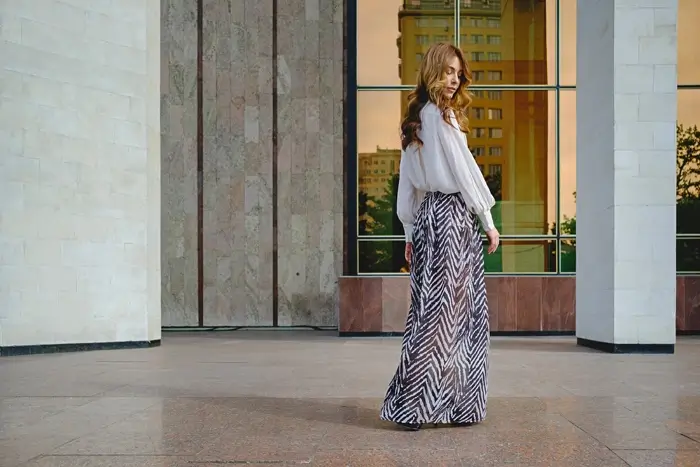
Polyester is a widely used synthetic fabric that finds numerous applications across industries. Its versatility and advantageous properties make it a popular choice for various purposes. Polyester is extensively used in apparel, including clothing items, sportswear, and activewear, due to its durability, wrinkle resistance, and colorfastness. It is also utilized in home furnishings such as curtains, upholstery, bedding, and cushions, providing resistance to fading and stains. In addition, polyester fabric finds applications in technical textiles, outdoor gear, packaging materials, flags, banners, and industrial uses like conveyor belts and insulation. The uses of polyester are diverse and continue to expand as new innovations and advancements are made in the textile industry.
THE COST OF POLYESTER FIBER
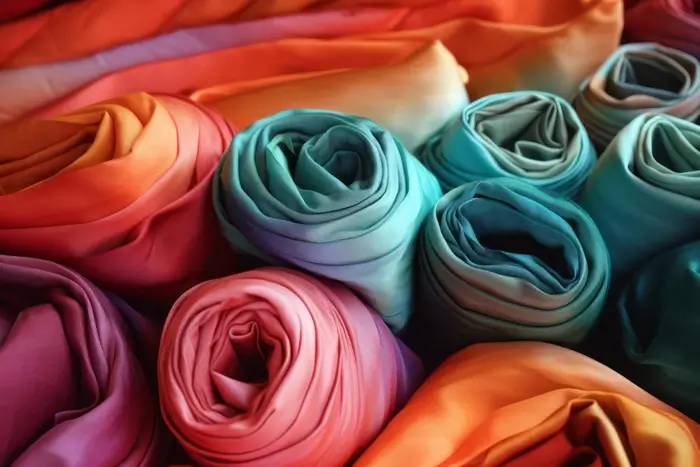
Polyester fabric is known for its affordability in the textile market. Compared to other natural fibers, polyester is generally less expensive due to its lower production costs and widespread availability. Factors that can influence the cost of polyester fabric include the quality of the fabric, production processes, brand, and location. Higher-quality polyester fabrics with specialized properties may be priced higher than basic polyester fabrics. Market demand, competition, and regional factors also play a role in determining the cost of polyester.
Overall, polyester’s cost-effectiveness makes it an accessible choice for a wide range of consumers, offering durability and performance at an affordable price point.
WHAT ARE THE PROS AND CONS OF POLYESTER?

Polyester fabric offers several advantages, but it also has its drawbacks. Let’s explore the pros and cons of polyester:
Pros:
- Durability: Polyester is a durable fabric that resists stretching, shrinking, and wrinkling, ensuring long-lasting garments.
- Easy Care: Polyester is easy to care for, requiring minimal ironing and being machine washable.
- Moisture-Wicking: Polyester has excellent moisture-wicking properties, making it suitable for athletic and outdoor clothing.
- Colorfastness: Polyester retains vibrant colors even after repeated washing and exposure to sunlight.
Cons:
- Lack of Breathability: Polyester is less breathable than natural fibers, which can lead to discomfort in hot and humid conditions.
- Sensitivity to Heat: Polyester can melt or deform when exposed to high temperatures, making it susceptible to heat damage.
- Environmental Impact: Traditional polyester is derived from non-renewable resources and has a significant carbon footprint. However, sustainable alternatives like recycled polyester are emerging.
IS POLYESTER FABRIC STRETCHY?
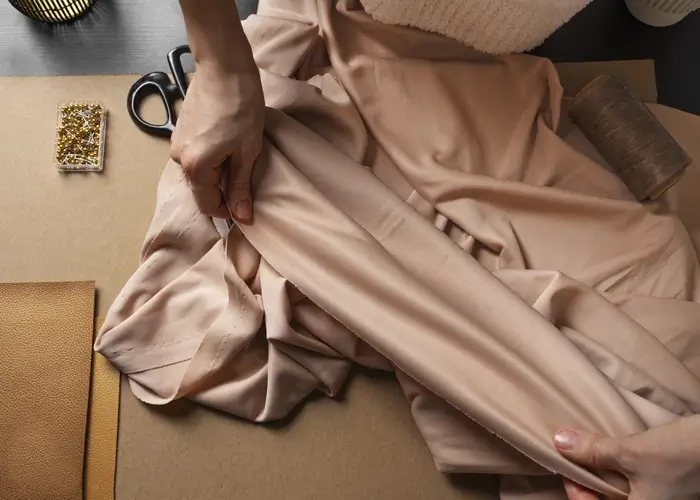
Polyester fabric is generally not known for its stretchiness. While it does have some inherent elasticity, it is not as stretchy as other fabrics like spandex or elastane. Pure polyester fabric tends to have limited stretch and is more resistant to stretching or deforming. However, polyester blends with elastane or other stretch fibers can offer improved stretch and flexibility. These blended fabrics are commonly used in sportswear and activewear to provide better freedom of movement.
It’s important to note that the stretchiness of polyester fabric can vary depending on the specific composition, knit, or weave. When seeking stretchy fabrics, polyester blend alone may not be the most suitable choice.
DOES POLYESTER STRETCH OUT OR SHRINK AFTER WASHING?
Polyester fabric is known for its ability to retain its shape well, even after washing. It has minimal stretch and is less prone to stretching out compared to other synthetic fabrics.
Unlike natural fibers like cotton, polyester does not have significant shrinkage issues. It is resistant to shrinking, and its dimensional stability is one of its strengths.
However, it’s always important to follow the care instructions provided by the manufacturer to ensure the longevity and shape retention of polyester garments. Excessive heat or improper washing and drying methods can potentially affect the fabric’s properties, so it’s best to handle polyester fabrics with care during the laundering process.
PRINTING ON POLYESTER VS NATURAL FIBER

Printing on polyester and natural fiber fabrics has its own characteristics and considerations. Polyester fabric is compatible with dye sublimation, heat transfer, and DTG printing, offering vibrant and long-lasting prints. It dries quickly and resists fading, but its moisture-wicking properties can affect ink absorption.
On the other hand, natural fiber fabrics like cotton, silk, and linen have good ink absorption and breathable nature. They can be printed using screen printing and block printing techniques, but drying time may be longer. Natural fibers are also considered more environmentally friendly. The choice between polyester and natural fibers for printing depends on factors such as desired print quality, fabric properties, and sustainability preferences.
HOW DOES THE POLYESTER FABRIC IMPACT THE ENVIRONMENT?
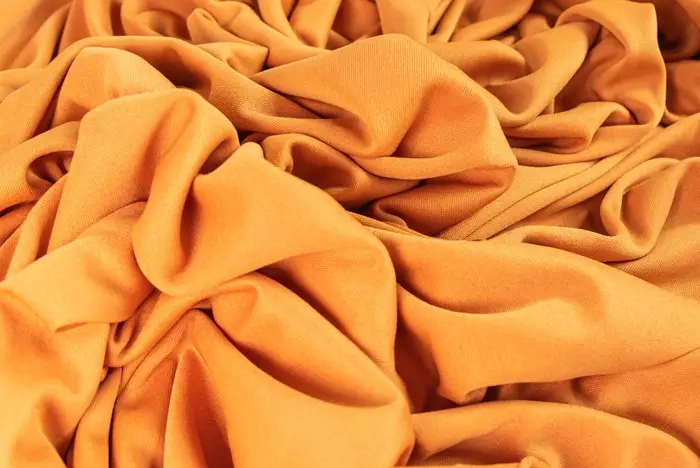
Polyester fabric has a significant impact on the environment. It is derived from non-renewable fossil fuels, contributing to resource depletion and greenhouse gas emissions during its production. The manufacturing process involves the use of chemicals that can be harmful to ecosystems and human health if not properly managed. Polyester is not biodegradable and contributes to the accumulation of textile waste in landfills.
Additionally, when washed, polyester releases microplastic fibers that pollute water bodies and harm marine life. To reduce the environmental impact, initiatives such as recycling, use of recycled polyester, and development of bio-based alternatives are being pursued, along with promoting sustainable fashion practices and consumer awareness.
CONCLUSION
In conclusion, polyester fabric is a versatile and widely used synthetic textile with its own set of advantages and disadvantages. It offers durability, easy care, and vibrant color retention, making it suitable for various applications. However, its limited breathability, potential for static buildup, and environmental impact raise concerns.
To address these issues, sustainable alternatives such as recycled polyester and plant-based polyester are emerging. It is crucial for consumers to be aware of the environmental consequences and make conscious choices when it comes to polyester fabric. By considering the pros and cons, exploring sustainable options, and supporting eco-friendly practices, we can contribute to a more responsible and sustainable textile industry.

